European Union countries currently have one common currency called the euro. However, before the appearance of this banknote, each state used its national currency. In each country, it had a name and features.
Many may ask questions about what kind of money was in circulation in a particular country before the common European currency. For example, people who are not indifferent to Rome may be interested in the question of what the Italian currency was before the introduction of the euro. Let's plunge into the story.

The historical currency of Italy
Before the appearance of the official European currency in Italy, for a long time they used completely different money, which was called lira. The first mention of this currency appeared at the end of the VIII century. However, then this concept was used simply as a designation of counting units, coins with that name were not minted.
Italian lira: the story of the appearance
The currency of Italy, the lira, is considered the oldest monetary unit in Europe. It owes its appearance to the reform of Emperor Charlemagne, which he carried out in 780-790. Its result was the replacement of Roman gold solidas with silver dinaries and the introduction of silver monometallism throughout the Carolingian empire. The only coin minted was the Carolingian dinar, containing pure silver weighing about 1.67 g. Solid now began to equal 12 dinars, and one lira consisted of 20 solids.
Why lira? Because this word itself arose from the Latin libra - pound, which is approximately 410 g. It is easy to calculate that silver in 240 dinars (how many were in 1 lira) is just about the same.
And although the lyre did not become physical money as a result of these transformations, in everyday life this name was used almost always. For example, the amount of 2429 dinars in everyday life would be spoken as follows: 10 lire, 2 solid and 5 dinars.
The formation of the lira as a real currency
For 100 years after the reform of Charles the Great, the coin that he put into circulation did not change. However, then the silver dinar begins to lose weight, and therefore the lira depreciates. Later, many coins of different weights begin to appear in many territories of the Carolingian Empire, and the lira of each region has its own value that differs from the original value.
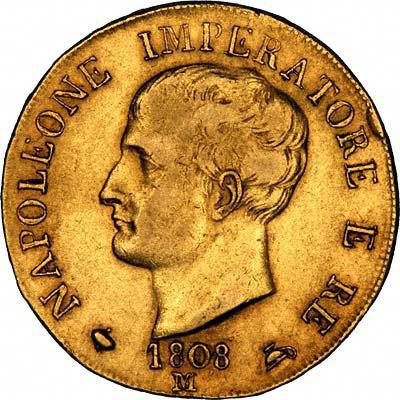
When the XVIII century came, a very wide variety of coins was in circulation in the cities of the country, and it was difficult to give an unequivocal answer to the question of what currency in Italy. For example, in Milan, 29 kinds of silver coins and 22 kinds of gold coins were used. Thanks to the process of unification of money that began spontaneously during this period, the lyre finally enters the scene.
This currency where in many places existed as a symbolic unit and at the same time united different monetary systems. And now she had the opportunity to become a real unified currency, the creation of which in many Italian states are directed reforms of the 18th century.
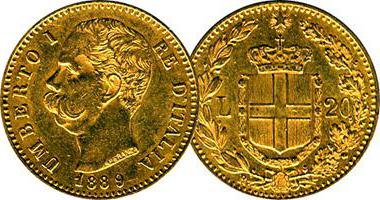
Finally, the Italian currency called lira came into use after the reunification of the kingdom of the Savoy dynasty. The coinage of the single Italian lyre, in which the pure silver content was 4.5 g, was begun in 1861.
Lyra and Centesimo
The new single currency of Italy owes its introduction to the law, signed in August 1862, on the 24th. Mints minted coins with 5, 1, 2 lira from silver, and 20 and 10 lira from gold.
A changeable coin was also created called centesimo, which was 1/100 of the lira. These coins in denominations of 2, 5 and 1 units were made of copper, 50 units of silver.A little later, there appeared a centesimo of 10 units (from copper) and 20 units (first from silver, then from a copper-nickel alloy), as well as 5 lira from gold.
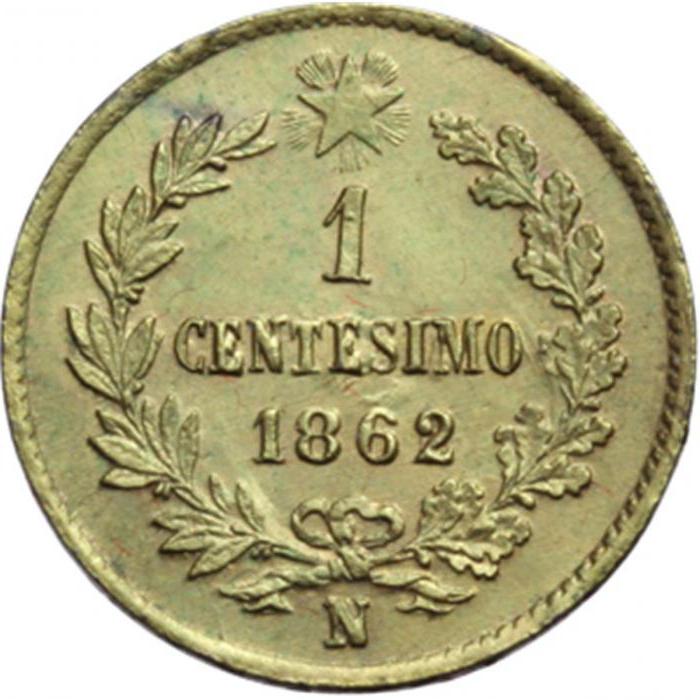
Different coinage of the Italian lira
Over its long years of existence, the former currency of Italy has depreciated several times, and this mainly happened during the wars.
After the end of World War I, the value of monetary units in Italy fell. The minting of coins with 2 and 1 lira, as well as 50 centimesimos, was made of nickel. In the years after World War II, small lyres began to be made of stainless steel, and larger ones (20, 5 and 10) - from silver. During this period, the release of the bargaining chip ceases to be very reasonable, since there was strong inflation. It was also decided that banknotes should be issued with a face value of at least 1000 lire.
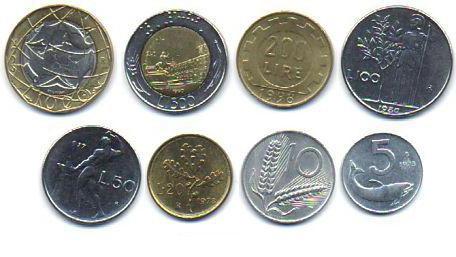
In 1951, all coins were replaced with new ones whose size became smaller. Denominations of 2, 10, 5, and 1 lira are made of aluminum. A little later, coins of 100 and 50 lira, made of stainless steel, 20 lira of an alloy of aluminum and bronze, 500 lira of silver, were introduced. In the early 80's. The twentieth century in Italy, the first bimetallic coins in denominations of 500 lira appear.
New lyre
In March 1979, the country joined the European Monetary System. After that, in 1986, the Italian currency was subject to denomination, and one new lira was exchanged for 1000 old.
Coins remained in use, only the smallest denomination of them began to amount to 5 lira, and the largest - 1000 lira. True, they were almost never used in trade, and were popular only among numismatists and collectors. At the same time, banknotes in circulation were with high denominations: from 1000 to 500,000 lire.
The appearance of the old Italian currency
The currency of Italy before the introduction of the euro was considered very beautiful. These were paper money, which depicted various great people of this country.
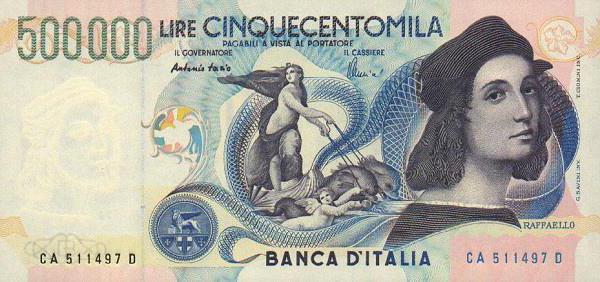
For example, an Italian philosopher, teacher and scientist Maria Montessori flaunted on a 1000 lira banknote, and a composer from Italy Vincenzo Bellini was depicted on a 5000 bill. Banknotes with the largest denominations adorn portraits of famous masters of art. Giovanni Lorenzo Bernini can be seen on a bill of 50,000 lire, Michelangelo on a bill of 100,000 lire, and for 500,000 lire there is an image of Rafael Santi.
The modern currency of Italy
In early 2002, the currency of Italy began to change radically. This happened because a completely new monetary unit appeared in circulation - the euro.
Italian euros are not much different from the same currencies of other European countries. But still they have their own characteristics. Firstly, banknotes have their own unique series, by which you can immediately determine that they were issued in Italy. Secondly, the reverse of the iron euro directly indicates the country to which they belong, with the help of symbolic images. For example, on an Italian coin of 1 euro, the “Harmonious Man” is depicted on the back - a drawing by the famous Leonardo da Vinci.
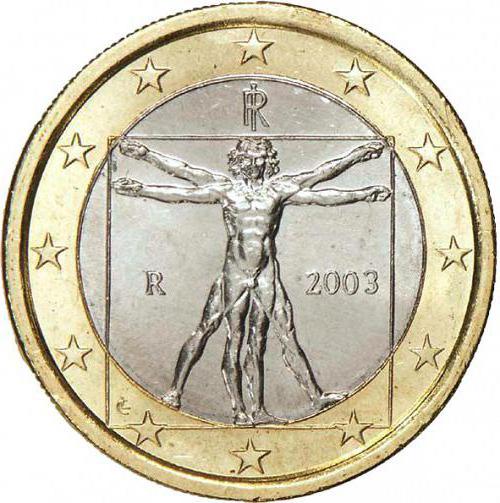
Until March 2003, when asked about the currency in Italy, one could talk about both the lira and the euro, because they were used in parallel throughout the country. Then the lira was completely withdrawn from circulation, and for another 10 years they could only be exchanged for euros.
Therefore, now any person who is going to the Apennine Peninsula does not need to think about what currency to take to Italy. If the tourist will have the euro in his wallet, then he will not have any problems with paying for goods and services in this country.
